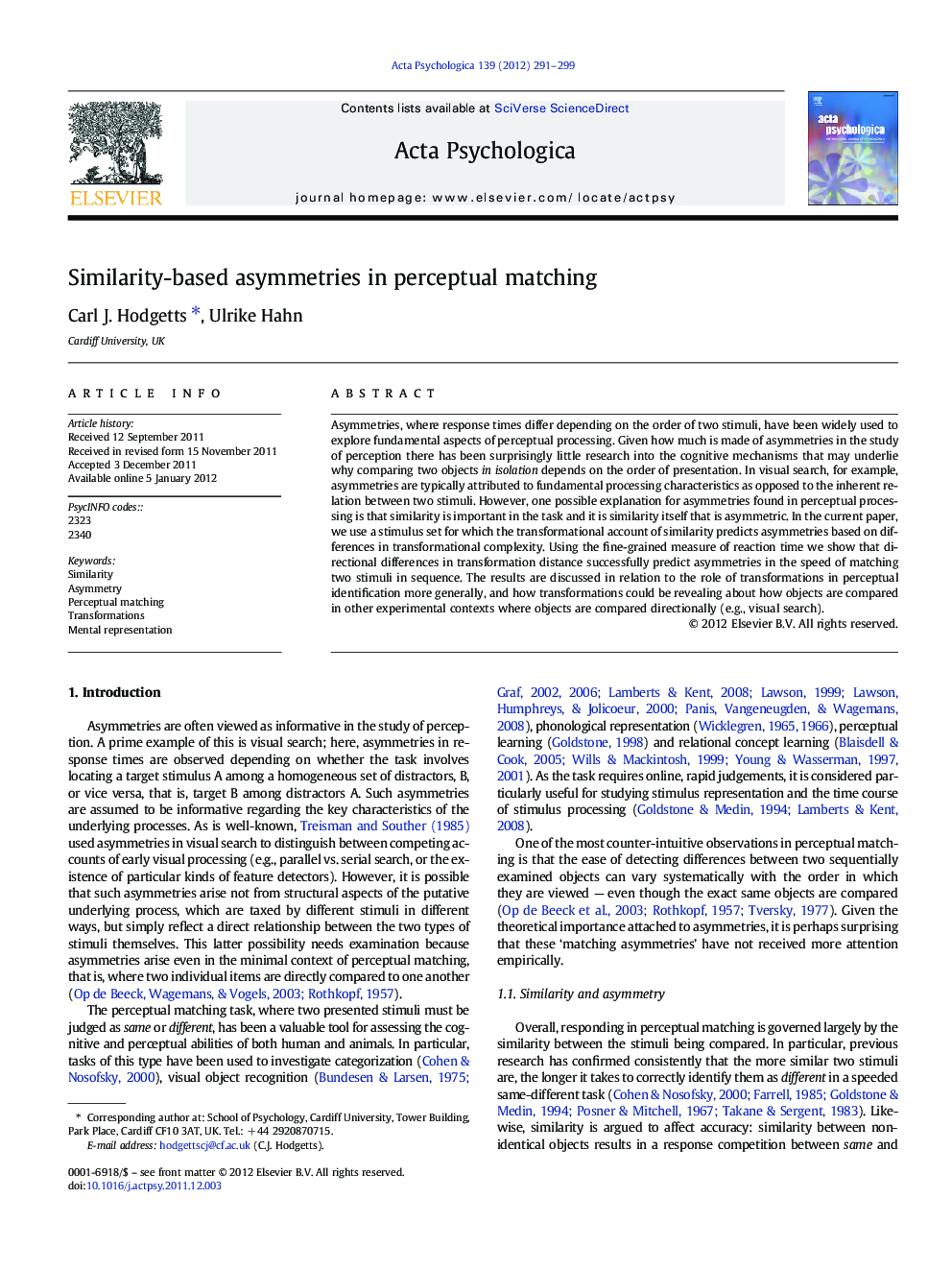| Article ID | Journal | Published Year | Pages | File Type |
|---|---|---|---|---|
| 919993 | Acta Psychologica | 2012 | 9 Pages |
Asymmetries, where response times differ depending on the order of two stimuli, have been widely used to explore fundamental aspects of perceptual processing. Given how much is made of asymmetries in the study of perception there has been surprisingly little research into the cognitive mechanisms that may underlie why comparing two objects in isolation depends on the order of presentation. In visual search, for example, asymmetries are typically attributed to fundamental processing characteristics as opposed to the inherent relation between two stimuli. However, one possible explanation for asymmetries found in perceptual processing is that similarity is important in the task and it is similarity itself that is asymmetric. In the current paper, we use a stimulus set for which the transformational account of similarity predicts asymmetries based on differences in transformational complexity. Using the fine-grained measure of reaction time we show that directional differences in transformation distance successfully predict asymmetries in the speed of matching two stimuli in sequence. The results are discussed in relation to the role of transformations in perceptual identification more generally, and how transformations could be revealing about how objects are compared in other experimental contexts where objects are compared directionally (e.g., visual search).
► The ease of comparing two visual stimuli can depend on the order of presentation. ► Such asymmetries are commonly attributed to different processing characteristics. ► Transformational similarity may provide an alternative explanation. ► Results show that transformations predict asymmetries in perceptual matching. ► Similarity may be revealing about asymmetries in other tasks (visual search).
